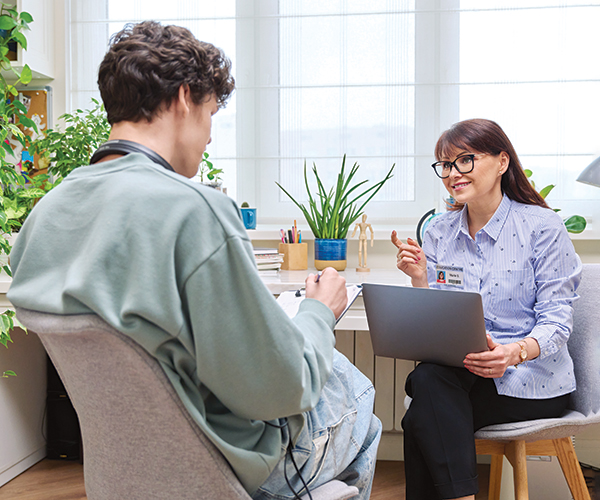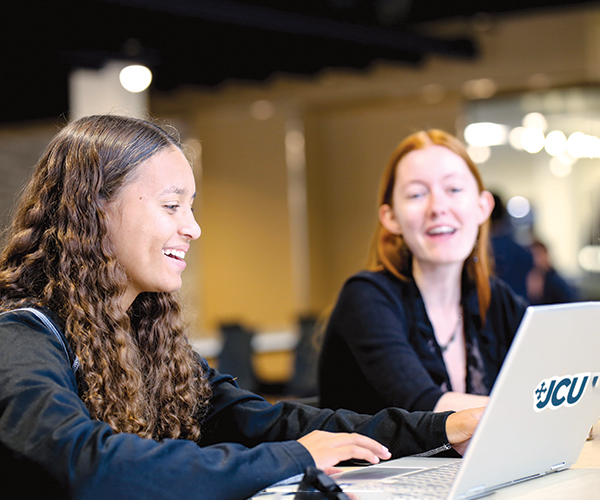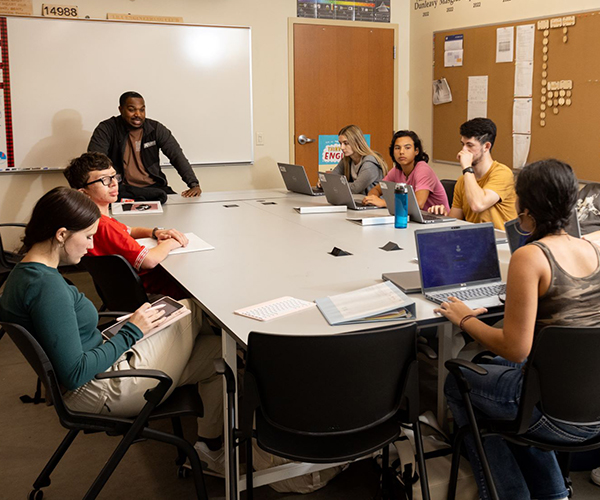Elementary Tech
by Jennifer Keirn | Sep. 15, 2012 | 4:00 AM
As a kindergartner, Tiffany Kaplan's daughter came home each day from Laurel School buzzing about "Jeff and Steph" and all of the cool things she was learning from the pair.
They taught her that Antarctica•s Adelie penguins poke holes in the ice to reach their underwater feeding grounds. She learned that hot water thrown out a window into the -18 degree Celsius Antarctican air will freeze before hitting the ground, and the ways that polar sea worms adapt to extreme environments.
But "Jeff and Steph" weren't teachers in Laurel's kindergarten classroom. They were Jeff Bowman and Stephanie Guida, researchers at McMurdo Station in Antarctica, the logistics hub of the National Science Foundation's U.S. Antartic program.
As part of a unit on Antarctica, kindergarten teacher Julie Haylor connected with the McMurdo research team via Skype for a half-hour question-and-answer session with her class. They demonstrated the cool water-into-ice trick and how tough it is to get into the protective suit they must wear outdoors.
When the McMurdo team offered to fly a Laurel flag above the station for a day — a tool they use to test wind speed — the class banded together to decorate a canvas flag with their own artwork and the Laurel logo. The day it flew, the class watched their flag in real time on the classroom SmartBoard and got it returned by mail with the researcher's signature.
"What a great life lesson for them to create something like this and send it to the bottom of the earth," says Kaplan. "Julie just brought Antarctica to life for these girls."
It's the type of lesson no field trip could duplicate, nor could any other traditional education techniques. The use of technology has radically changed the way education is delivered at the elementary level.
Through the use of iPads, educational apps, Skype, SmartBoards, digital textbooks and more, the focus of schools is now shifting from basic technology access — such as ratios of computers to students — to outcome-oriented lesson plans using tech tools.
"Our focus is on the process rather than the product," says Brad Gill, director of Hawken's lower school. "Long gone are the days of just putting a group of students in a computer room."
Access versus Success
"You can equip a school with state-of-the-art technology, but if it's not being used in the right way, it's worthless," says Gail Stein, director of the lower school at University School.
Pilot programs among elementary schools both public and private have strived to identify what a successful technology program looks like.
"Success means you got the learning outcome from it you expected, and it usually surpasses expectations," says Carole Lechleitner, Hathaway Brown's primary school and early childhood technology coordinator. "The trend is to take the technology and put it in the hands of the students."
The tool of choice to achieve that goal today is the iPad. It's highly portable and intuitive, even for the youngest of children. It's also technology that many kids are already familiar with from home. Apps allow access to virtually endless educational opportunities at a low cost, and the modality facilitates collaboration as opposed to solitary use.
"A laptop creates a barrier between students," says Larry Goodman, the head of school and library studies teacher at The Lillian and Betty Ratner School. "An iPad lets students look at each other and the teacher. Little ones need a lot of contextual cues."
Goodman's students use iPads for work in clusters, collaborating on projects.
Some schools have iPads set aside for each classroom, even if they haven't reached a one-to-one ratio of devices to student. Other schools have invested in a few sets that can be "checked out" by a particular teacher for a lesson plan.
Experimentation rules the day; teachers research new apps, software and other tools to find which will achieve those goals. At Hawken School, a wiki space allows teachers to share feedback on how they've used new technology and the results they achieved.
Case in point: Variety among tech tools allows teachers to reach kids with different learning styles in the best way possible.
"Some kids are visual learners. Some are auditory learners. Some are very artistic," says Stein, whose one-to-one laptop ratio initiative starts in fourth grade. "Where the tech part can come in is in creativity and innovation. The creation part is exciting for kids."
Global Outlook, Personal Application
After making a connection with a teacher in Sweden, Hathaway Brown fourth-grade teacher Mary Boutton began looking for ways to connect her class to these Swedish students.
Boutton's students and their Swedish counterparts used video-conferencing technology to read and analyze the same book. They established a blog to discuss the book and get to know their new Swedish friends, and used Google Docs to collaboratively write a new story.
Whether it's Antarctica or Sweden, connecting students to the world is one of the top ways technology is used in today's classrooms.
But just as important as accessing a world full of technology is understanding a child's place in it, says Goodman.
"I want to demystify technology," he says. "I don't want them to think there's this magical place where all the information comes from."
He gets down on his hands and knees to show every class where the wires into their network begin, leading them through the school's server room and outdoors to where they connect to the outside world.
Goodman believes that the best use of technology should take students beyond the reach of first-person observation, but "we shouldn't use technology to teach habitats when we can walk outside and do the same thing."
Many schools are using the power of iPads to create tools that more powerfully communicate within the school community, from parent to teacher, teacher to student, and parent to student.
At the beginning of last school year, Hawken School's third-graders used an iPad to record themselves talking about their goals and hopes for the year. When parents came to the school for the standard beginning-of-the-year open house, they were presented with their child's iPad.
"They got an undiluted, honest child looking back at them and sharing their hopes and dreams," says Gill. "It broke a stereotype of technology being isolating and cold."
Open Door Christian Schools used a live feed between its campus and site of its annual fundraising dinner to stage an Are You Smarter Than a 5th Grader? competition.
"[The attendees] assumed they were in the same building," says Angie Lowe, Open Door's elementary principal. "They were shocked that the kids were back at school."
Doing It Right
It's new, it's cool and it's exciting. But there remains hesitation among some parents and educators toward allowing technology to pervade time-tested classroom approaches.
"Responsible use of technology means that we don't neglect the fundamentals," says Goodman. "We don't read all day long, we don't do math all day long, we're not on the computer all day long. If we are a responsible school, we will be responsible in the way we integrate technology."
Lowe returned to the classroom last year after staying home to raise her six children, and recalls her own fears as a parent.
"I would say, They want so much technology at home, why do they need more? Can't we just stick to the basics?" says Lowe, whose school now has at least two iPads per classroom. "But now I see the excitement and passion they have, so we need to capitalize on it."
To ensure safe and acceptable use, Lechleitner uses kid-friendly search engines — examples include KidRex.com (powered by Google) and QuinturaKids.com (also available as an app) — and uses the iPad's parental controls to limit improper use.
Learning to sift through the Internet's debris to find accurate information is another part of today's technology curriculum.
"Our priority is still at developing literacy and numeric skills in lower school," says Gill. "Our objectives haven't changed, but the methods we use have. Technology hasn't superseded anything."
Ultimately, Stein and others say it's about embracing new ways of learning in balance with fundamental educational principles.
"It can't be their world and our world," she says. "It's part of their digital life. School can't be so far removed from the way they live their lives."
These aren't objections Kaplan hears very often from fellow parents of elementary-age kids. Most are enthusiastic about how technology is changing their children's classrooms and excited to see what's next.
She sees the evidence in her home, too. It's been nearly a year since Kaplan's daughter got to know Jeff and Steph, but the lesson's stayed lodged in her brain. She still talks about those penguins and asked for books about Antarctica's wandering albatross.
When one acquaintance expressed concern about so much tech in the classroom, Kaplan's reaction was swift.
Trending
-
1
-
2
-
3
-
4
-
5










